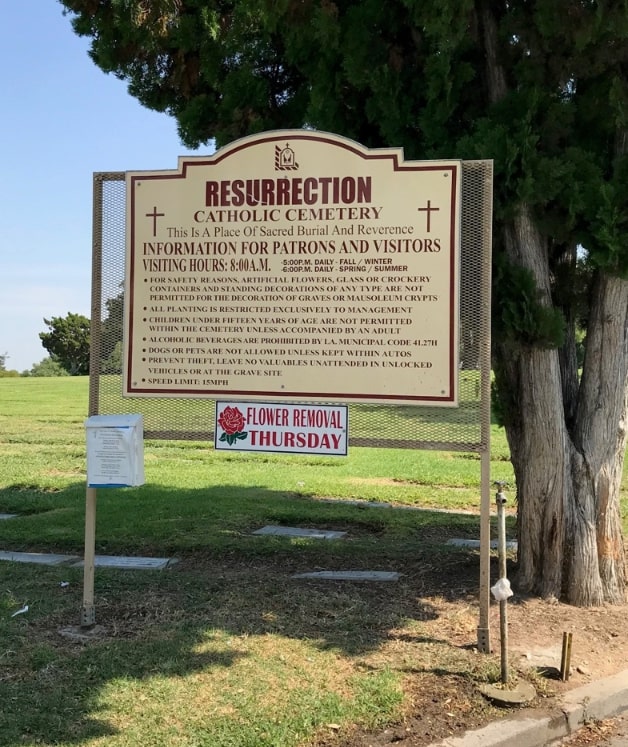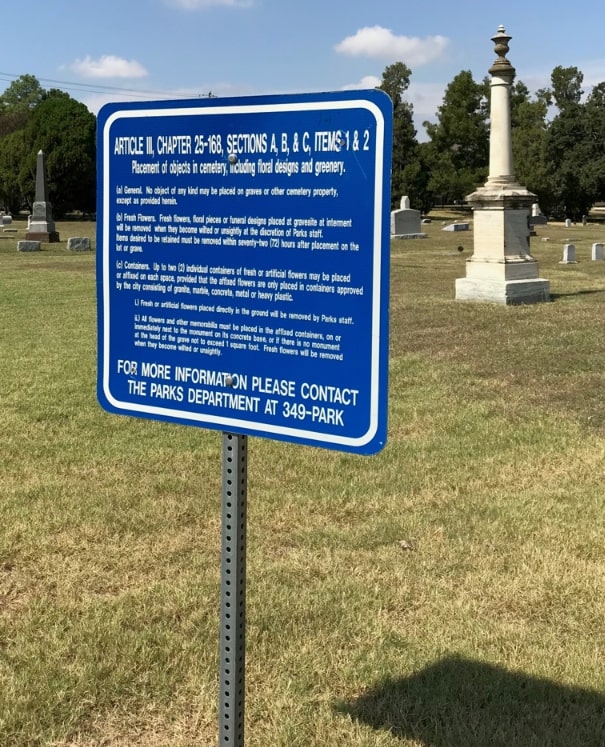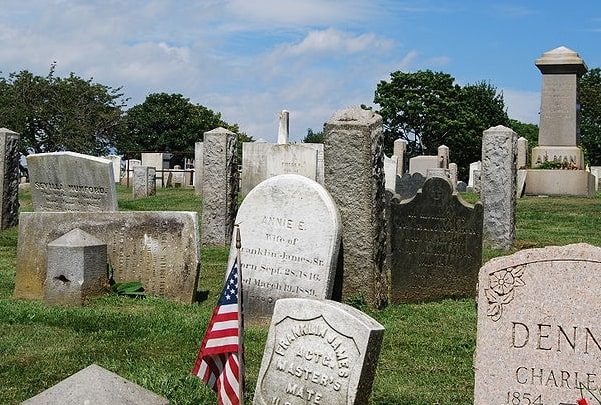Introduction: In this article, Gena Philibert-Ortega suggests common-sense rules for something genealogists love to do: visit cemeteries. Gena is a genealogist and author of the book “From the Family Kitchen.”
For family historians, summer is a time to travel to cemeteries to document our ancestor’s final resting place. Preparing to visit begins with locating the cemetery and the burial. Once you’re at the cemetery, you need to consider cemetery etiquette as well.
What is cemetery etiquette? Cemetery etiquette reminds us how to behave at the cemetery and that cemeteries have rules for visitors.

Cemetery Etiquette Guidelines
It’s difficult to provide an all-encompassing list of cemetery etiquette since cemeteries vary greatly depending on where they are located and who maintains them (if at all). The following are some generic guidelines.
Consult the cemetery website before you go. Some, but not all, cemeteries have a website. Cemetery websites include information about visiting the cemetery and may include a section listing rules or cemetery etiquette. Aside from some of the guidelines I’ve listed below, they may have rules and restrictions about photography in the cemetery and publishing photos. If the cemetery does not have a website, consult any rules posted at the cemetery.

Don’t stand on graves. This is probably the one “rule” most of us first learn about cemeteries. As I perused numerous online cemetery etiquette lists, this was one of the requests consistently made. Walk between graves. Pay attention to where the grave is and do not walk over it. Also, do not enter family mausoleums that have been broken into or that have been left unlocked.
Don’t touch gravestones or memorials. It can be tempting to touch or lean against a marker or memorial. But in one word, don’t. Even if a memorial is made of marble and looks sturdy, touching, leaning, or sitting on it can cause damage. I know that many of us in the past have done gravestone rubbings in an effort to “preserve” and take home our ancestor’s marker. It’s best to skip the rubbing and take a photo instead. Markers and memorials weigh hundreds of pounds and take very little force to tip over, which can injure you and destroy the marker. So be respectful.
Don’t use gravestones as props for your social media posts. I admit that I use gravestone photos for my articles and social media posts. They can be a powerful learning tool. But in this instance, I’m referring to leaning, sitting, or standing on markers or graves. I also don’t photograph more recent burials or markers unless they are my family. As I mentioned previously, the cemetery may have rules about photography and using photos that you take. Finally, don’t take photos of people or funerals.
Don’t clean memorials without permission. Some people are cleaning markers to help make them more readable. This can be a wonderful service, but remember not to do this unless you have the permission of the cemetery. They may have rules against it, or they may want to verify that you know what you are doing. In some cases, people have done irreparable harm to markers despite their good intentions.
Don’t leave items at graves. Each cemetery has different rules, but in general be mindful of what you leave at a burial. Some items may not be welcomed, such as food, balloons, or plastic flowers. Each cemetery is different so consult their rules available on their website or posted at the cemetery.
Watch kids. Cemeteries are not playgrounds. That may seem obvious – and I am a believer in taking children to cemeteries. Cemeteries can be a tool for teaching children their family history, but first go over cemetery etiquette before you get out of the car. Explain to them the importance of not yelling, running, and touching markers. Gravestones, even those that look stable, have been known to fall and injure children.
Pick up litter. Don’t leave trash (or items not allowed) at the cemetery. Trash bins are sometimes provided but if not, take with you any items you brought into the cemetery.
Visit only during daylight hours. Most cemeteries are open from dawn to dusk. Respect those hours. Cemeteries can have all kinds of hazards that are not visible during nighttime, such as uneven pavement, holes, debris, and sinking graves. Consult their website or onsite posted hours.
Don’t bring pets unless it’s allowed. A cemetery may seem like a great place to walk your dog, especially memorial parks with their fields of grass and trees, but make sure the cemetery allows pets before you go. If they do, keep your dog leashed.
Watch where you drive. I’ve visited all types of cemeteries. Memorial parks can have paved streets and obvious places to park. Some rural cemeteries may have burials that are right on the edge of thinly defined roads. Make sure as you drive in the cemetery that you pay attention to where the burials are. If there is grass, keep your car off the grass. I have visited cemeteries where it was best to park the car outside the cemetery gates and walk in, to avoid accidentally disrupting any burials or markers.
Watch your noise. Cemeteries are places where people are mourning. Be respectful of those who are grieving. It can be tempting to excitedly yell when you finally find your ancestor’s burial, but think twice. Also, don’t approach people. Visitors to cemeteries are there for a variety of reasons including mourning. Lastly, keep clear of funerals. If there is a funeral being conducted near where you need to take a photo, consider coming back when it’s over.
Explore over 330 years of newspapers and historical records in GenealogyBank. Discover your family story! Start a 7-Day Free Trial
Note on the header image: Common Burying Ground and Island Cemetery in Newport, Rhode Island. Credit: Matt H. Wade; Wikimedia Commons.
For More Information
To give you some ideas about the diversity of cemetery rules and etiquette, consult the following websites:
- Arlington National Cemetery – Visitor Rules and Etiquette
- Congressional Cemetery – Rules & Regulations
- Inglewood Park Cemetery – Cemetery Etiquette
- National Park Service – Cemetery Etiquette (PDF)
- Princeton Memorial Park and Mausoleum – A Guide to Cemetery Etiquette: How to Respectfully Visit and Pay Your Respects
Related Articles:
- It’s Not All Online: Cemetery Research
- Genealogy Tips: Lessons Learned from Writing a Cemetery Book
- Genealogy Tip: What Does a Gravestone Tell Us?
- Genealogy Tip: What a Gravestone Tells Us – Grave Markers
- Genealogy Tip: How Accurate Is That Gravestone?
- Cemetery Language: A Glossary for Genealogists
- Genealogy Tip: White Bronze Markers at Cemeteries
- Genealogy Tip: Gravestone Porcelain Photos
